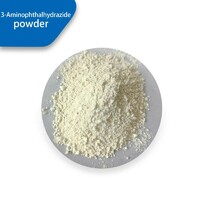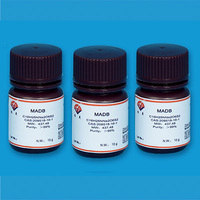Acridine salt NSP-SA assists biomedical detection
Product Quick Detail
- Place Of Origin
- China (Mainland)
- Minimum Order
- 10
- FOB Price
- USD $27.80 / Piece
- Packaging
- 1mg/pc
- Delivery
- 15 Days
Specifications
In the field of modern biomedical detection, chemiluminescence technology has become an indispensable analytical tool due to its high sensitivity, speed, and simplicity. Among them, the chemiluminescent reagent acridine salt NSP-SA has shown remarkable performance in the detection of various biomolecules such as antigens, antibodies, and enzymes due to its unique properties, and has become a commonly used chemiluminescent substrate in biomedical detection.
1、 Basic characteristics of acridine salt NSP-SA
Acridine salt NSP-SA is a compound with chemiluminescence properties. Under specific reaction conditions, it can undergo chemical reactions with oxidants such as hydrogen peroxide, releasing a large amount of energy in the form of light, thereby producing a strong fluorescent signal. This fluorescent signal has high specificity and sensitivity, and can detect trace substances in biological samples.
Another important characteristic of acridine salt NSP-SA is its stability. In acidic solutions, it exhibits good stability and is not easily hydrolyzed or degraded, ensuring its reliability during long-term storage and experimental processes. In addition, the acridine salt NSP-SA also has good water solubility, which can quickly dissolve and function in aqueous solutions.
2、 Application of Acridine Salt NSP-SA in Biomedical Detection
Antigen and antibody detection
In immunological research, the detection of antigens and antibodies is a crucial step. Acridine salt NSP-SA forms fluorescent complexes by binding to specific antigens or antibodies. Under specific wavelength light excitation, these complexes emit strong fluorescent signals, enabling the detection of antigens or antibodies. This technology has the characteristics of high sensitivity, high specificity, and fast and simple, and has been widely used in biomedical research and clinical diagnosis.
Enzyme activity analysis
Enzymes are a class of biomolecules with catalytic functions that play a crucial role in living organisms. By detecting the activity of enzymes, the metabolic processes within the organism can be understood, providing strong support for disease diagnosis. Acridine salt NSP-SA can bind to specific enzyme substrates to form substrate complexes with fluorescent properties. When enzymes act on substrates, they release fluorescent signals, enabling the detection of enzyme activity. This technology not only has high sensitivity, but also can monitor changes in enzyme activity in real time, providing a powerful tool for enzyme activity analysis.
Fatty acid and vitamin testing
Fatty acids and vitamins are essential nutrients for the human body and are of great significance in maintaining human health. By detecting the content of fatty acids and vitamins in biological samples, one can understand the nutritional status and health level of the human body. Acridine salt NSP-SA can bind with fatty acids and vitamins to form fluorescent complexes. Under specific wavelength light excitation, these complexes emit fluorescent signals, enabling the detection of fatty acids and vitamins. This technology has the characteristics of high sensitivity and high selectivity, providing strong support for nutrition and clinical nutrition.
- Country: Afghanistan
- Business Type:
- Market:
- Founded Year:
- Address:
- Contact:Doris Yang











